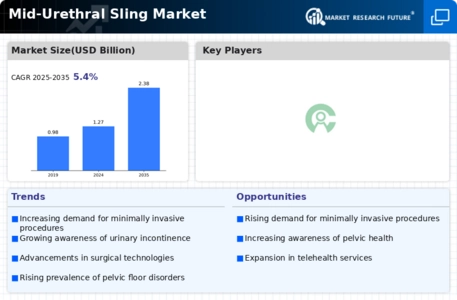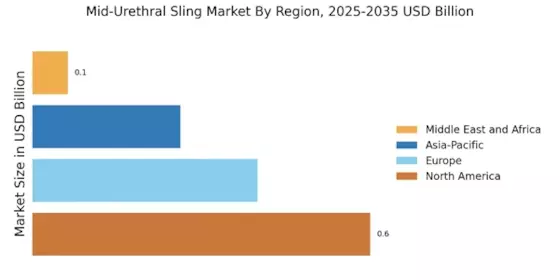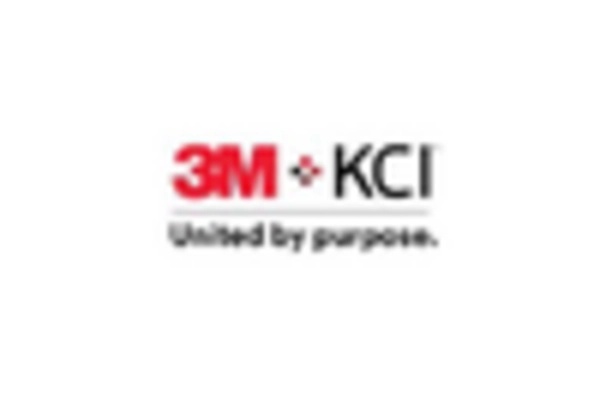Mid-Urethral Sling Market Summary
As per MRFR analysis, the Mid-Urethral Sling Market Size was estimated at 1.27 USD Billion in 2024. The Mid-Urethral Sling industry is projected to grow from 1.339 USD Billion in 2025 to 2.265 USD Billion by 2035, exhibiting a compound annual growth rate (CAGR) of 5.4 during the forecast period 2025 - 2035.
Key Market Trends & Highlights
The Mid-Urethral Sling Market is poised for growth driven by technological advancements and increasing awareness of pelvic health.
- North America remains the largest market for mid-urethral slings, driven by a robust healthcare infrastructure and high patient awareness.
- The Asia-Pacific region is emerging as the fastest-growing market, fueled by rising healthcare investments and a focus on women's health initiatives.
- Tension-free Vaginal Tape (TVT) slings dominate the market, while Transobturator (TOT) slings are experiencing rapid growth due to their minimally invasive nature.
- The rising incidence of urinary incontinence and regulatory support for innovative treatments are key drivers propelling market expansion.
Market Size & Forecast
| 2024 Market Size | 1.27 (USD Billion) |
| 2035 Market Size | 2.265 (USD Billion) |
| CAGR (2025 - 2035) | 5.4% |
Major Players
Boston Scientific (US), Medtronic (US), Coloplast (DK), Ethicon (US), Acelity (US), B. Braun (DE), Stryker (US), Cook Medical (US), C.R. Bard (US)

















Leave a Comment